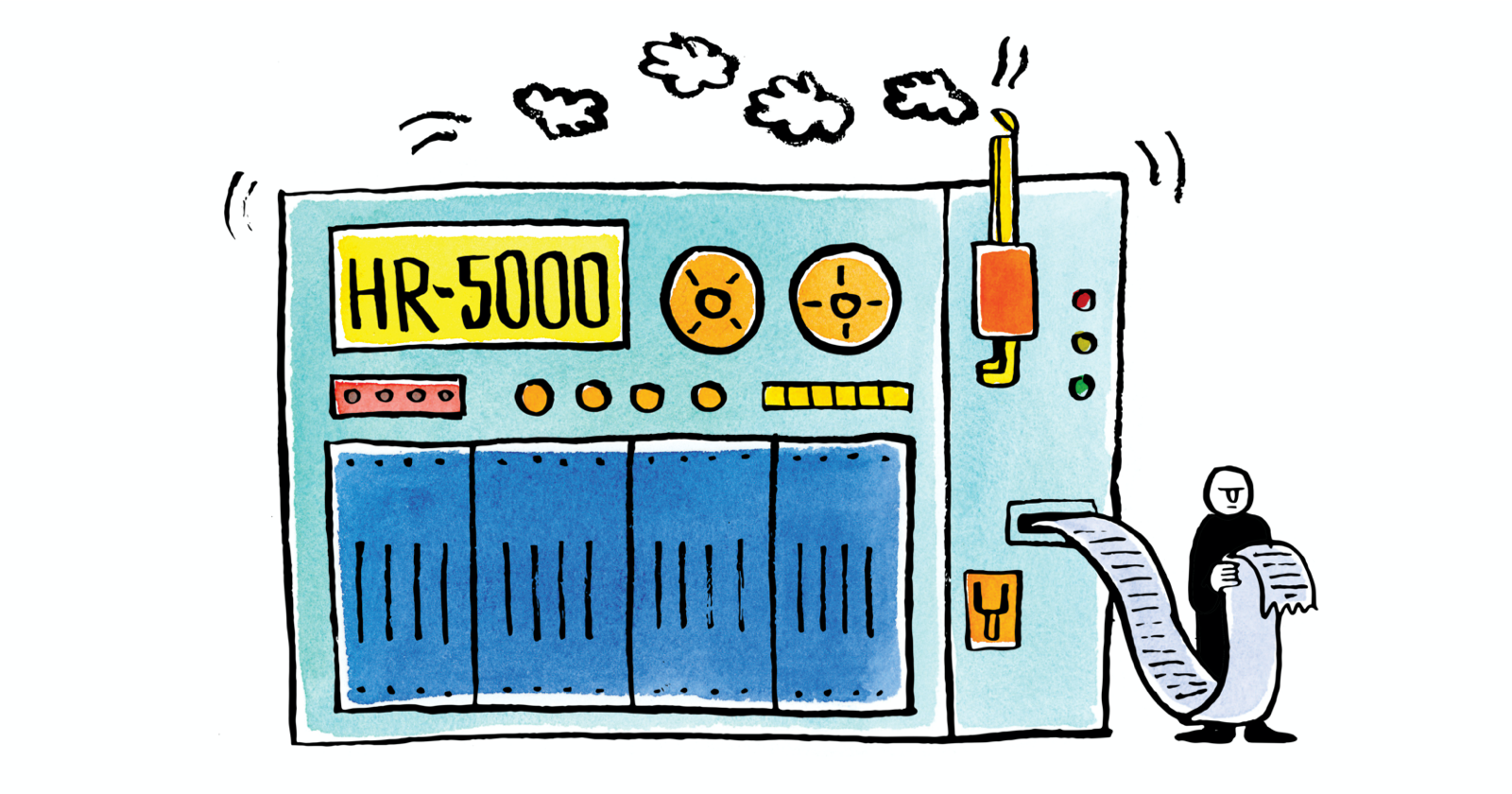
Great hiring is an art.
From asking the right questions to retaining employees long-term, there’s a lot more to finding an A-player candidate than meets the eye.
Lucky for you, we’ve got a trick or two up our sleeve.
Because to become a true recruitment master, there’s actually only one thing you need to understand above all else: the numbers behind the hires.
We’ve pulled together the ultimate guide to all things HR analytics to help you figure out what, when and how to measure your HR results to secure superstar hires every time.
What Are HR Analytics?
At its core HR analytics (a.k.a. people analytics) are all about learning which recruitment, hiring and employee engagement processes work, for how long, and how they’ll affect your business into the future.
Sounds simple enough, right?
It can be—as long as you know what to look for.
And according to Linkedin’s Future of Recruiting report, the main thing to look for is quality.
The report shows quality of hire (QoH) is the metric to watch over the next 5 years, with 88% of recruiters agreeing it’s time to jump on the bandwagon. Because although the concept of measuring QoH has been around for a while, only about 48% of recruiters bother with it—and they’re the ones snapping up all the awesome hires.
If that doesn’t trigger your FOMO, maybe this will:
Companies that knuckle down on quality of hire are 3X more likely to see improvements in retention and performance, and 2X more likely to see improvements in productivity.
Cool, right?
Well, get ready to join the party, because today we’re breaking down this (and other!) core people analytics to help you make sure your recruitment game is 100% on-point.
HR Analytics for Recruitment: What is quality of hire?
Quality of hire—or QoH as it’s affectionately known—is the value a new employee brings to your organization.
From the productivity of a new hire to your overall employee retention stats, there are tons of indicators you can use to figure out the long-term contribution employees will bring your biz.
Plus, if you keep tabs on your QoH, your future hiring decisions will be better informed—meaning your hires will improve every time. When people talk about predictive HR analytics, that’s essentially what they’re getting at. It’s the idea that these numbers will help you make better talent decision in the future.
Why should I track quality of hire?
Even if you already have a talented team of employees, figuring out how and why things are working should be at the top of your list.
Because once you know the overall value of your employees, you can start optimizing it.
But that doesn’t mean it’s always easy.
For example, it can be hard to put a number against something as abstract as culture fit—but that’s exactly why it’s so important to nail your metrics ASAP.
At the end of the day, the better you know your business, the faster you’ll see results. 📈
Create Stellar Hiring Reports: Simple Formulas for Your Pre- and Post-hire HR analytics
Whether it’s productivity levels or the time it takes to fill a role, there’s nothing more satisfying than watching your scores go up.
But how can you improve something if you don’t know where things stand today?
Here’s a list of key indicators to watch, so you can figure out your quality of hire—and start to improve it.
IMPORTANT: Make sure to score each of these metrics out of 100—you’ll see why later. 😉
Pre-hire metrics
The trick to getting A++ quality of hire measurements is starting at the beginning.
That means figuring out exactly what measurements you’ll track from the moment you share the job ad all the way through to the offer.
Here’s a list of things to look out for from day one, and some surefire ways to grab the data you need:
- Assessment and aptitude tests: Don’t forget there’s a person behind the application. Aptitude tests help figure out who you’re speaking to before picking up the phone. Plus, they help steer the conversation from day one and gather the info you really want so that you don’t waste any time in your face-to-face interviews.
Collection methods to use: There are plenty of pre-employment assessment tools out there, but with Breezy’s hassle-free Criteria Corp integration you can automatically send pre-made assessments to candidates—easy breezy.🍃
- Time to fill: The number of weeks, days or hours (yep, we’ve seen it all!) it takes to fill a position is one metric you won’t want to miss. Time-to-fill is typically used to pinpoint potential obstacles in the hiring process so you can reduce wait times and loss of A-grade candidates. Awesome.
Collection methods to use: Most ATS’s (including our favorite) are able to generate a time-to-fill report. But if you don’t have access to an ATS, don’t fret. Grab the calculator and use this formula:
SUM of your time-to-fill for each role DIVIDED by number of roles you filled in the same period EQUALS your average time-to-fill in days.
For example, you made 3 hires last quarter and they took 11, 10 and 9 days to fill.
Your sum is 11 + 10 + 9 = 30 / 3 = 10-day average time-to-fill.
Post-hire metrics
Great. You’ve got some stats down and you’ve made the hire—now the fun begins. Here are some of the top post-hire indicators that can give you an idea how your recruitment strategy is really performing.
- Job performance: We’re going back-to-basics on this one—because measurement of job performance is talent management best practice 101 🎓. It’s a simple idea: if you know the baseline of employee performance, you can see how well (or not) your hires are doing.
Collection methods to use: There’s no standard method for measuring job performance, so to make it easier many companies use a 100-point scale. You can then gather data on numerous employees and voila! You have yourself an awesome set of stats to work from.
- Productivity: To get productivity metrics that count, first you need to know where you’re going. Set your goals in place (for individual employees and the org as a whole) so you can measure against them. If your new hire achieves the expected targets in the timeframe you’ve set out, you know you’ve aced it. 🙌
Collection methods to use: There are loads of ways to measure productivity, but the easiest is to work with managers and employees to fill out target sheets against defined goals. You’ll need to use some kind of scale, so you’re left with tangible quantitative data.
- Turnover and retention: We can’t keep all our hires forever. But knowing how you’re doing in terms of staff retention is key to keeping those numbers (not to mention costs) down. According to the Center of American Progress, the average turnover cost for a high-skill role is 213% higher than the cost of keeping that role in place for a year. 😵 In other words, this is one metric you need to know.
Collection methods to use: Calculating your turnover rate is simple. Take the no. of employees who left your company (let’s say over the course of a year), then divide that number by your average staff size in the same timeframe. Next, multiply that number by 100. Compare your result against the national/industry average to see how well you’re doing.
For example if you had 20 staff members leave in a year and your average staff size is 100, your turnover rate is 20 / 100 x 100 = 20% — if the industry average turnover is 15%, you know you need to improve.
- Employee Lifetime Value (ELTV): Wouldn’t it be cool if you could measure the contribution of employees over the entire span of their role? With ELTV you can predict the total output of an employee from their net value to the amount of hires they make.
Collection methods to use: Create a chart with ‘Employee output value’ on one axis and their ‘Time in role’ on the other, so you can see employee contribution across a lifecycle period. You can easily gather data from employees who have come and gone—or calculate ELTV by predicting anticipated output.
For example, let’s say a recruiter’s ELTV chart says ‘Roles filled’ on one axis and ‘Time in role’ on the other. If they recruited 5 people per month on average and they were in the role for 12 months but didn’t recruit anyone in their first month, you can assume they filled approximately 55 roles. Note: It’s unlikely a new hire would make any measurable contributions in their first month, so leave it out.
Bonus tip: It’s likely you already collect most of these indicators in one form or another. Think about how you can give each of those metrics a score out of 100 and finding your quality of hire score will be as easy as 1, 2, 3.
One last formula to remember
Whichever indicators you choose to measure, the one you really want to end with is the overall quality of hire.
To work it out, simply add your existing indicators together and divide it by the number of indicators used. (Psst! Remember when we told you to score everything out of 100? This is where it comes in handy!)
For example, if you’ve measured your productivity (total score of 70), ELTV (81) and time-to-fill (89), simply add them together and divide by 3.
In this case your sum would be 70 + 81 + 89 = 240 / 3 = 80%
To figure out the QoH score of your company as a whole, the same formula applies. Only this time, you’ll use averages over the whole company instead of individual indicators.
For example, if you’ve measured your average job performance (total score of 81), % of hires who stick around for over a year (60) and average time-to-fill (84), simply add them together and divide by 3.
Your sum would be 81 + 60 + 84 = 225 / 3 = 75%
If this seems like a lot of math, we get it.
Keep in mind, you only need to set these formula up once. After that, simply do a plug and play after every major hiring round.
And remember, when you’ve got your quality of hire percentage in hand, you can celebrate as you watch it go up. 📈🙌🎉
Time to ace your people analytics like a pro
Once you understand the whole hiring picture, there’ll be nothing standing in your way from creating a killer recruitment process. One that brings in quality hires every time.
We’re not saying data’s everything. At the end of the day, keeping it human is what it’s all about.
But adding this extra data-string to your bow will help you see where you’ve come from, where you’re headed and how you match up against the competition—plus, next time you’re looking that unicorn hire, they’ll be so much easier to spot. 🦄
What’s not to love?




